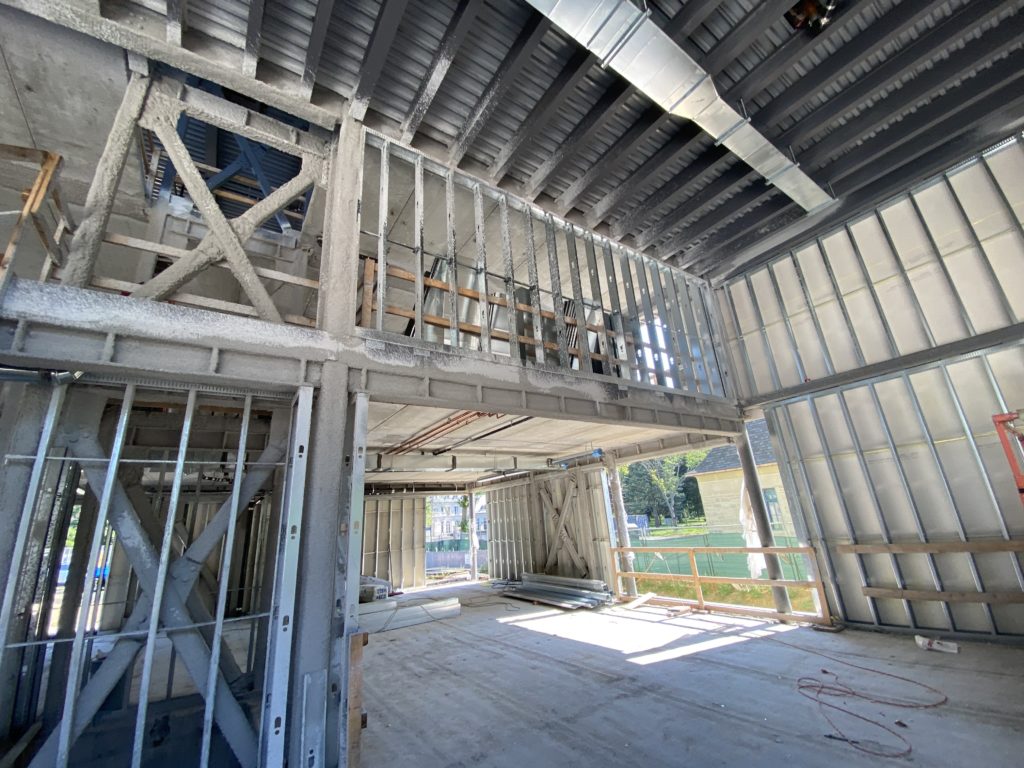North America is witnessing an explosion of building demands being placed on architects, engineers and contractors (and everyone else). There’s a lot going on. This article has 5 must-know ideas that can help professionals keep up with the dynamics the framing industry faces.
1. Green Building Policy Is Evolving
Experts say that reducing carbon emissions from building materials and construction will likely draw more local and state policy attention going forward.
For example, the newly adopted Denver green code takes effect in May 2023.
“The code will also consider the greenhouse gas emissions created during construction of a building and the manufacturing of its materials,” an article in Smart Cities Dive says. “It will set limits for carbon dioxide equivalent in the manufacturing of concrete and steel for commercial and multifamily developments.”
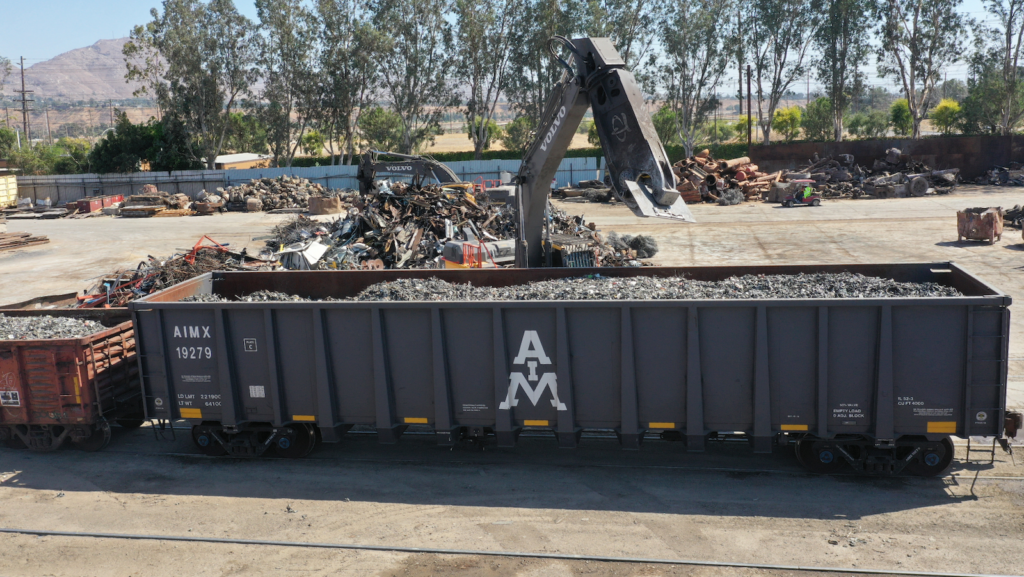
AIM Recycling California, an SFIA member, provides scrap metal processing, which is vital to the new circular economy.
Other local governments have introduced or are about to introduce embodied carbon policies. Portland, Oregon, has a low-carbon concrete ordinance that recently took effect. Last year, the mayor of New York City announced a clean construction executive order that addresses the procurement of cement, steel and machinery.
Another trend in the green building movement involves designing policies to develop the local circular economy — the salvaging and recycling of materials such as steel. Smart Cities Dive notes that Portland, Oregon, and Austin, Texas, are noteworthy leaders in this area.
2. Using Up-to-Date CFS Load and Span Tables is Important
The SFIA Technical Guide for Cold‐Formed Steel Framing Products, Version 2023.1, from the Steel Framing Industry Association helps architects, engineers, specification writers and contractors who work with cold-formed steel (CFS) framing to comply with the latest building codes and standards
The 2023 SFIA Technical Guide is the most up-to-date metal framing guide available in North America as it meets the requirements of the 2021 International Building Code (IBC), the 2022 California Building Code and the 2020 Florida Building Code.
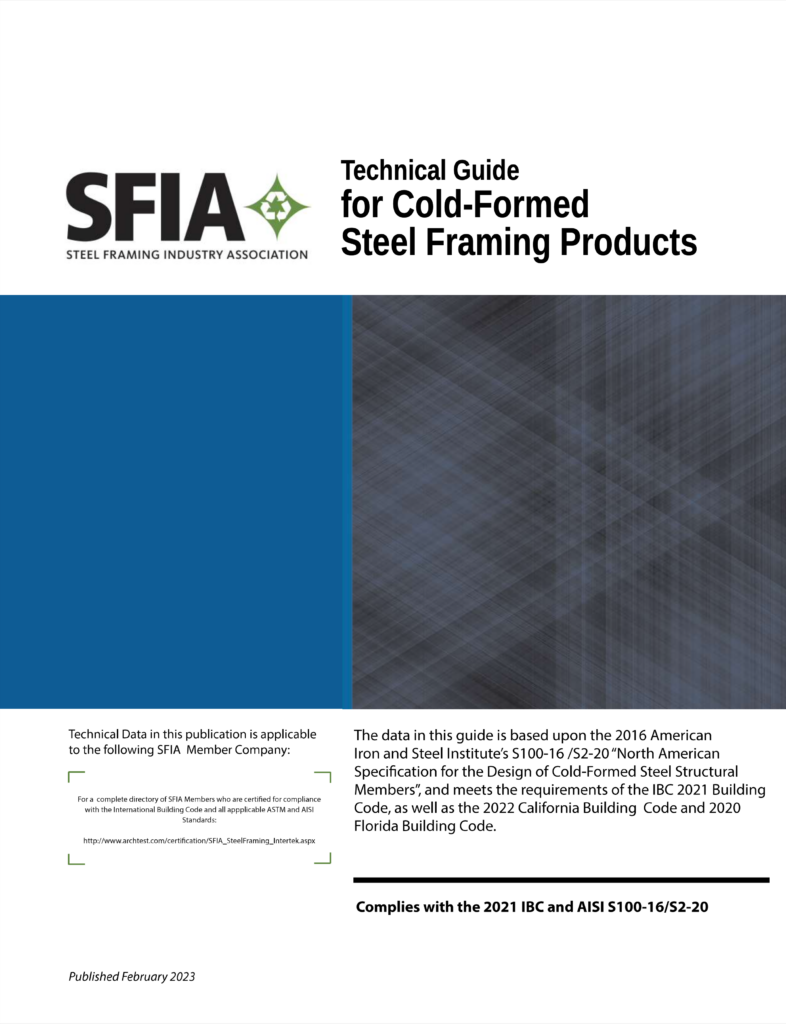
The SFIA Technical Guide for Cold-Formed Steel Framing Products, 2023.1 (February 2023), is applicable to the 2021 IBC and to newer versions of the California and Florida buildings codes.
“We’ve updated the properties tables and the comparisons in the new Technical Guide,” says Patrick Ford, SFIA technical director. “It’s the perfect, handy tool for engineers and others designing with cold-formed steel.”
3. AISI Is Addressing Energy Standards for Building Envelopes
As reported by BuildSteel, the Standards Council of the American Iron and Steel Institute (AISI) has formed a new group responsible for the ongoing development of AISI S250, North American Standard for Thermal Transmittance of Building Envelopes With Cold-Formed Steel Framing.
The new Committee on Energy Standards falls under the administrative oversight of the AISI Standards Council, which also oversees the Committee on Specifications and the Committee on Framing Standards.
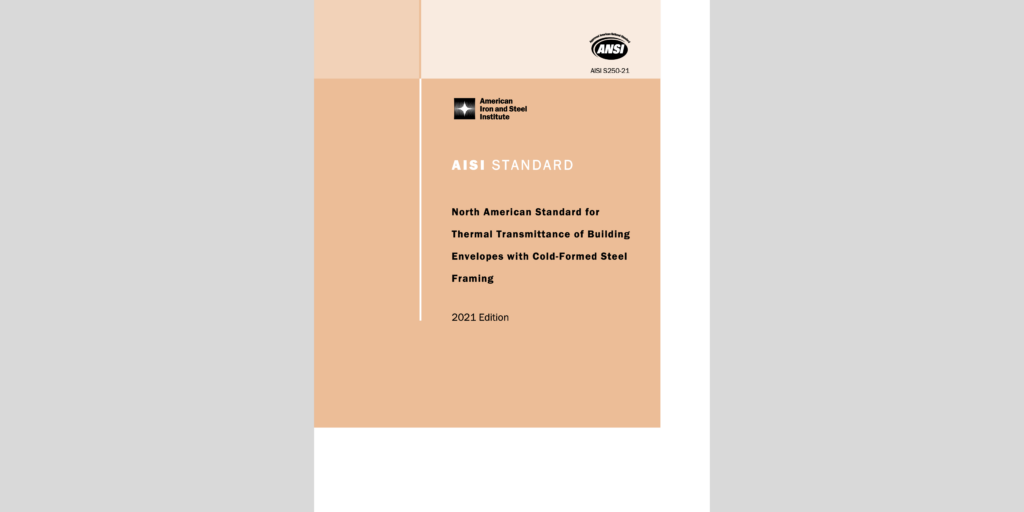
AISI S250-21 is a single source for calculating the thermal transmittance (U-factors) of walls and ceiling/roof envelope assemblies that contain cold-formed steel framing.
The new group is recognized as a consensus body by the American National Standards Institute (ANSI). It is comprised of AISI staff and experts from the steel construction industry, and will develop and maintain methods for determining heat transfer through building envelopes for assemblies containing cold‐formed steel (CFS) and other materials; develop prescriptive and performance solutions for code compliance, construction details, and installation quality standards; and address other similar issues that impact cold‐formed steel in the energy codes and standards arena.
“Thermal performance is increasingly influencing material selection in building design and construction,” said AISI Vice President of Construction Robert J. Wills, P.E. “The work of this committee will ensure that cold-formed steel is a viable option for those targeting advanced or net-zero buildings by 2030.”
4. These Guides Can Help Deliver Advanced Metal Framing Designs
The Steel Framing Industry Association (SFIA) has released up-to-date guide specifications for cold-formed steel (CFS) construction, and introduced two essential commentaries that provide additional guidance on the application of specifications to the codes and standards used in most United States building jurisdictions.
The SFIA 054000 Cold-Formed Metal Framing, the SFIA 092216 Non-Structural Metal Framing and their respective commentaries, available for free from the SFIA, are a set of tools for contractors, building owners, architects and structural engineers striving to deliver advanced framing systems and provide quality assurance and quality control on their projects.
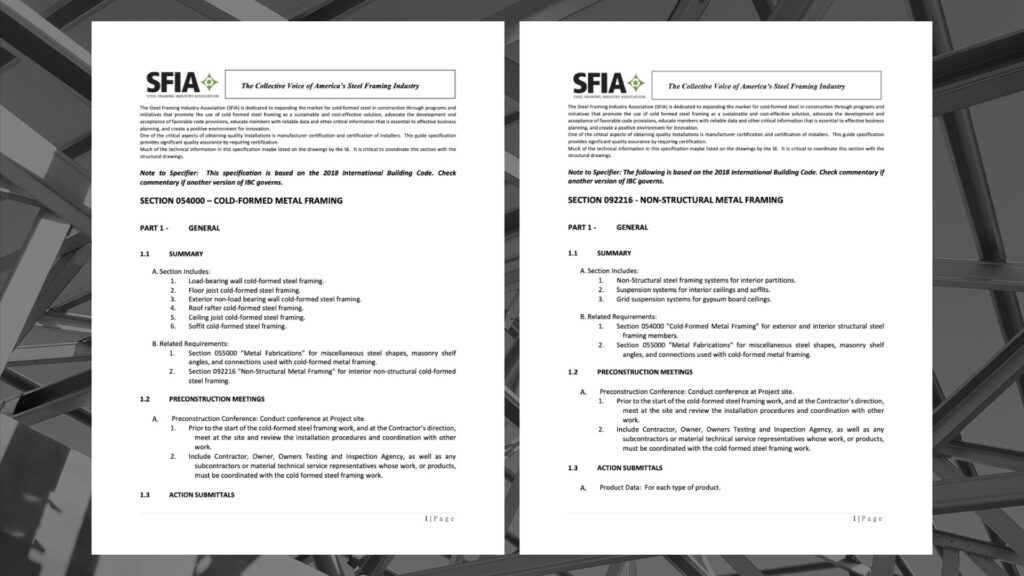
SFIA Guide Specifications give architects and engineers a handy way to specify metal framing systems.
The SFIA Guide Specifications are based on the 2018 International Building Code and consist of 4 documents:
- SFIA 054000 Cold-Formed Metal Framing — for use in the preparation of a project specification
- SFIA 054000 Commentary — provides additional definitions and clarifications
- SFIA 092216 Non-Structural Metal Framing — addresses interior CFS systems
- SFIA 092216 Commentary — provides additional definitions and clarifications
Architects, engineers and contractors should check the respective commentaries if another version of IBC governs. Read more here: SFIA Guide Specs.
5. Contractors Should Verify Project Specs Before Placing Bids
While it’s not always true, the specifications for metal framing can reference conflicting standards. In fact, some standards referenced by the model building codes need clarification. For example, the 2018 International Building Code (adopted in at least 26 states) references two different AISI standards in different parts of the code.
“You have standards referenced in the code that could create different capacities for the same assembly,” says Patrick W. Ford, P.E., S.E. Ford is SFIA technical director and a senior member of the engineering firm R.A. Smith, Inc., an SFIA member. He is also chairman of the AISI’s Framing Design Subcommittee for Cold-Formed Steel Framing.
The 2018 IBC references both the AISI S100-16 standard (issued in 2016) and the AISI S240-15 structural framing standard (issued in 2015). The later document references the older AISI S100-12 issued in 2012. But which part of the 2018 IBC has control, since both the 2016 AISI S100 and the 2012 AISI S100 are referenced?
AISI plans to update the AISI S100-16 Supplement 3 design standard for CFS framing in 2024, the AISI S220-20 the interior stud framing standard in 2026 and AISI S240-20 the structural framing standard also in 2026, according to the AWCI article.
Ford says framing contractors should remain vigilant about the codes and standards that govern their projects. Read more here: Keep an Eye on Project Specs.
Steel Framed-Home Built to Last Over 100 Years

A home outside of Toronto built with cold-formed steel (CFS) has a life expectancy of more than 100 years.
A modern home outside of Toronto, featuring cold-formed steel (CFS) framing, demonstrates how today’s innovative contractors are building homes that will last a century and beyond.
Located on Doulton Drive in Mississauga, Ontario, the residence has “a completely noncombustible rigid steel frame and solid concrete floors,” says homebuilder, Chatsworth Fine Homes, Oakville, Ontario.
“The architect designed this home to have a life expectancy of more than 100 years,” says Fil Capuano, president of Chatsworth Fine Homes. “Resilient products like the steel framing system were carefully chosen to meet that life span.”
The home features structural steel, CFS wall framing and wallboard.
“Those walls and reveals, no matter the finish, will always be straight,” says Chris Sliskovic, president of Life Drywall Systems, Ltd., an SFIA member, and Oakville, Ontario residential and commercial contractor that had the framing, drywall and finishing contract for the project. “Steel doesn’t warp. It doesn’t twist. The homeowner won’t ever get nail pops. And for sound, it’s just a no-brainer — the walls will be finished next to perfection.”
Cited from BuildSteel


